Happily, an expansive area of protected prairie is only a couple of miles from our summer home in northern Illinois. Kane County’s Nelson Lake/Dick Young Marsh and Forest Preserve deserves to be renamed. Both the wooded areas and the lake with its surrounding wetlands harbor a great diversity of bird species at all seasons, but thanks to recent acquisitions, grasslands now predominate. Local resident Christopher Cudworth’s recent blog provides a bit of the history and feel of this marvelous place. It’s no surprise that Nelson Lake is at the top of our list of accessible birding “patches”
Perhaps as a result of growing up among tightly spaced three story frame houses in suburban New Jersey, I especially enjoy open views that allow my eyes to simply relax, and appreciate why the ancient people of the deserts believed that the earth is flat. The prairie provides such vistas, as do the mountains and the seashore, all favorite places of mine.
On morning walks at Nelson Lake, Mary Lou and I have tuned into the rhythm of the cycling seasons, the ever-changing backdrop of flowers and activities of the birds we love to watch. Presently, with the dog days of summer, we see a winding down of nesting activity. Young birds abound.
Some youngsters can present identification challenges, as was the case with this swallow that was associating with a flock of fledgling Tree Swallows. Its brown back and the yellow edges of its gape established that it was also newly fledged, but its breast was smudged with brown that almost formed a distinct horizontal band. Its clear throat seemed to rule out a Northern Rough-winged Swallow.
The strong demarcation between its dark cap and the lower half of its head were entirely consistent with a Tree Swallow: 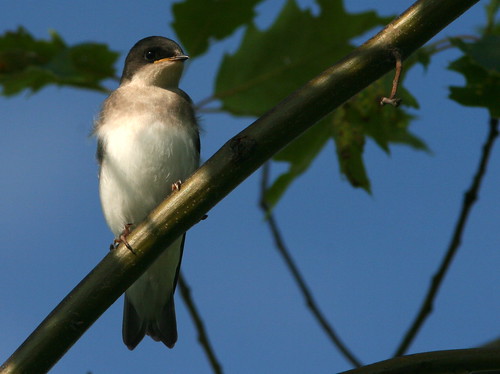
Then, also congregating with the Tree Swallows that were waiting to be fed, we saw this brown-backed bird. Its horizontal breast band was much more distinct, and the dark area extended partially down the midline of its belly. Further, its white collar blended more softly with the color of its cap, and extended around the sides of its head and curled up behind its dark ear patch. It lacked a yellow gape, suggesting it had not just recently left the nest. Its eyes were remarkably large and almost doleful.
This bird was, indeed, a Bank Swallow (click on image to see comparisons with fledgling Tree Swallows):
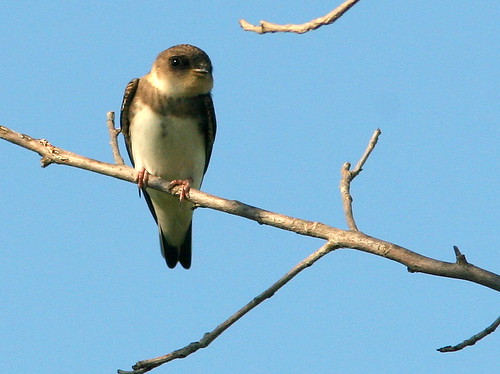
Either of these swallows, when flying by at a fast clip would have presented real identification challenges. Bank Swallows create nesting cavities by burrowing into the sides of cliffs. As a child I remember seeing colonial nesting sites of Bank Swallows along the banks of the Passaic River. In Illinois, they often utilize the sides of man-made cuts, such as gravel quarries and even piles of topsoil that developers remove from construction sites.
Without the aid of binoculars, these two youngsters could appear rather non-descript:
A distinctively plumaged adult Cedar Waxwing joined them:
Eastern Kingbirds were rarely seen near our central New Mexico mountain home, and in South Florida they may be brief migratory transients. This one was a welcome sight as it kept watch from the edge of a patch of woodlands: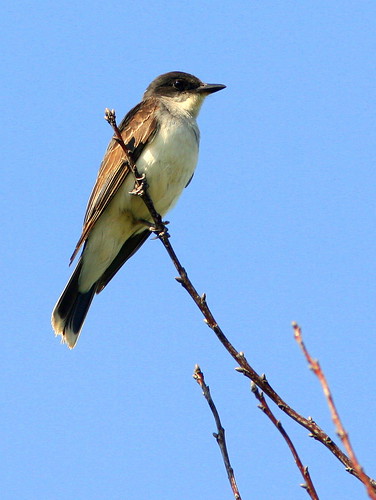
Earlier this week, Sedge Wrens were still singing and bringing food to their broods:
After missing them for a few days, Henslow’s Sparrows seemed to have reappeared, and we heard two of them singing along the trail through an area of prairie that had escaped a recent prescribed burn.
By sheer luck, I happened to click the shutter just as this one uttered its quarter-second song:
Sunflowers and a female American Goldfinch provided a pleasant arrangement: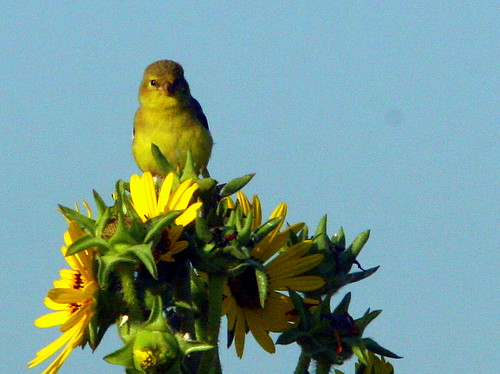
A reclusive female Common Yellowthroat put in a brief appearance: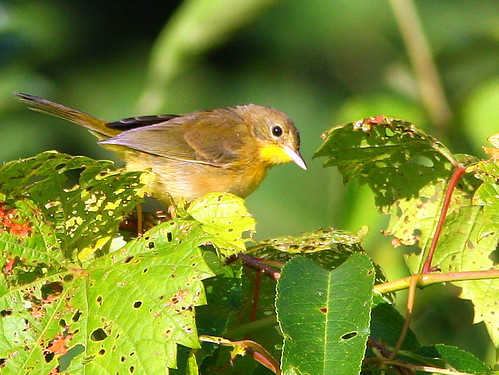
An Eastern Towhee flashed its red eyes and “Chewinked’ at us from the safety of a tangle of dead branches: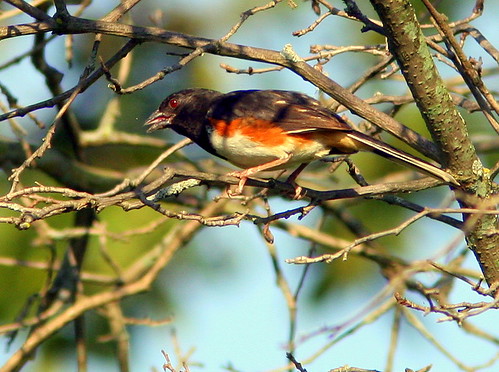
Luckily, I reached for my camera instead of my binoculars when I recognized the call and profile of this Hairy Woodpecker as it alighted for a few seconds and then promptly disappeared. When serving as an interpreter at Rio Grande Nature Center, I reminded bird watchers of two features that distinguish this species from the smaller but similar Downy Woodpecker. The Hairy “Haint” got no black spots on its outer tail feathers, and (arrgh!) if you push a Hairy Woodpecker’s bill into its face it will almost stick out the back of its head.
This Hairy Woodpecker, even when photographed at a distance, clearly shows both features: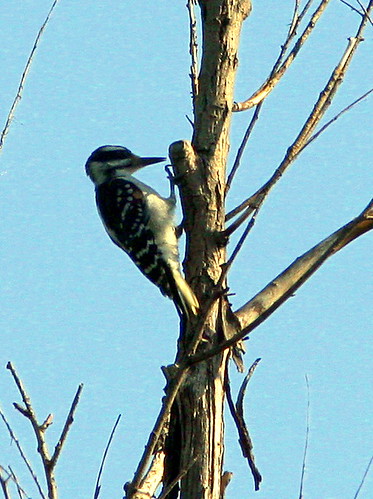
“A weed is a beautiful creation of nature that is just in the wrong place.” This aphorism is nicely illustrated by this noxious and invasive Hibiscus trionum “Flower-of-an-Hour,” so called because its flowers appear, oh so briefly (Its popular but much larger relative, the Rose of Sharon, Hibiscus syriacs, likewise can spread out of control):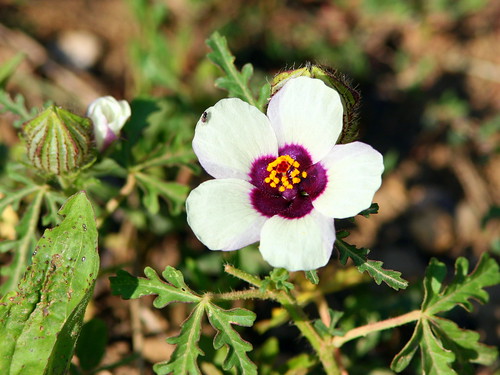
“M&Ms:” Monarchs and Milkweed go together:
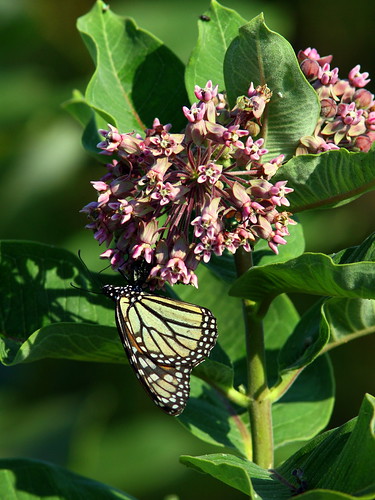
While walking our daughter’s dog in nearby Hawk’s Bluff Park, we encountered a pair of House Wrens busily gathering insects for their chicks:














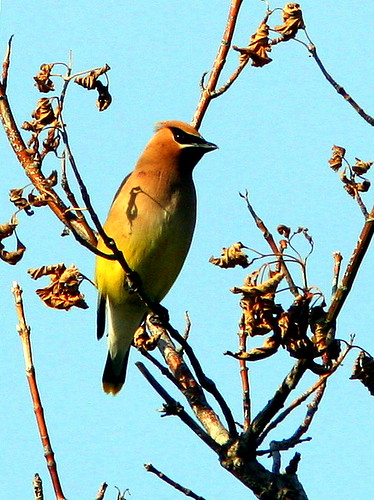
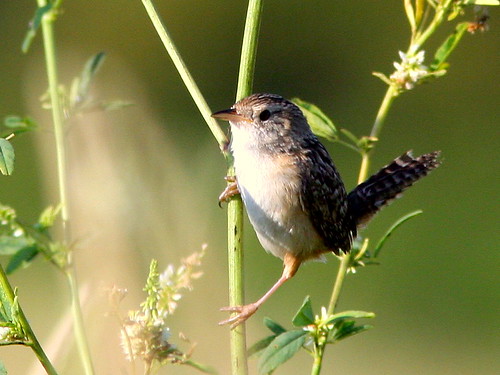
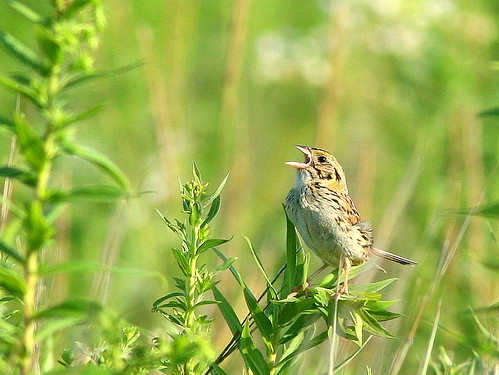
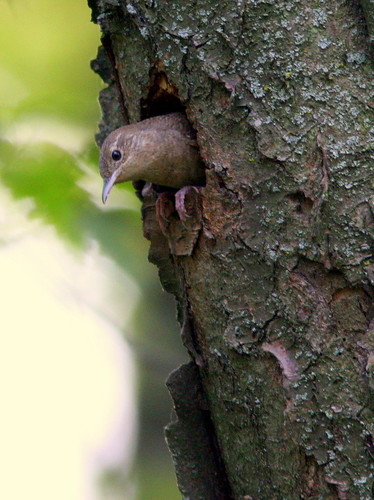
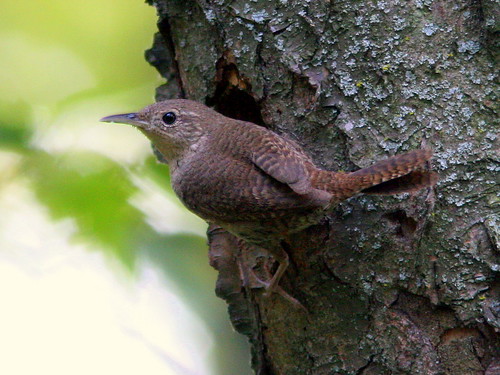
August 10th, 2009 at 10:26 pm I’ve yet to see a Bank Swallow. Your photos of him are gorgeous! I saw a Sedge Wren (lifer) and Henslow’s Sparrows last week also. I love that little song. Love how you captured him in mid song! It’s hard enough to photograph Henslow’s, much less capture the song!